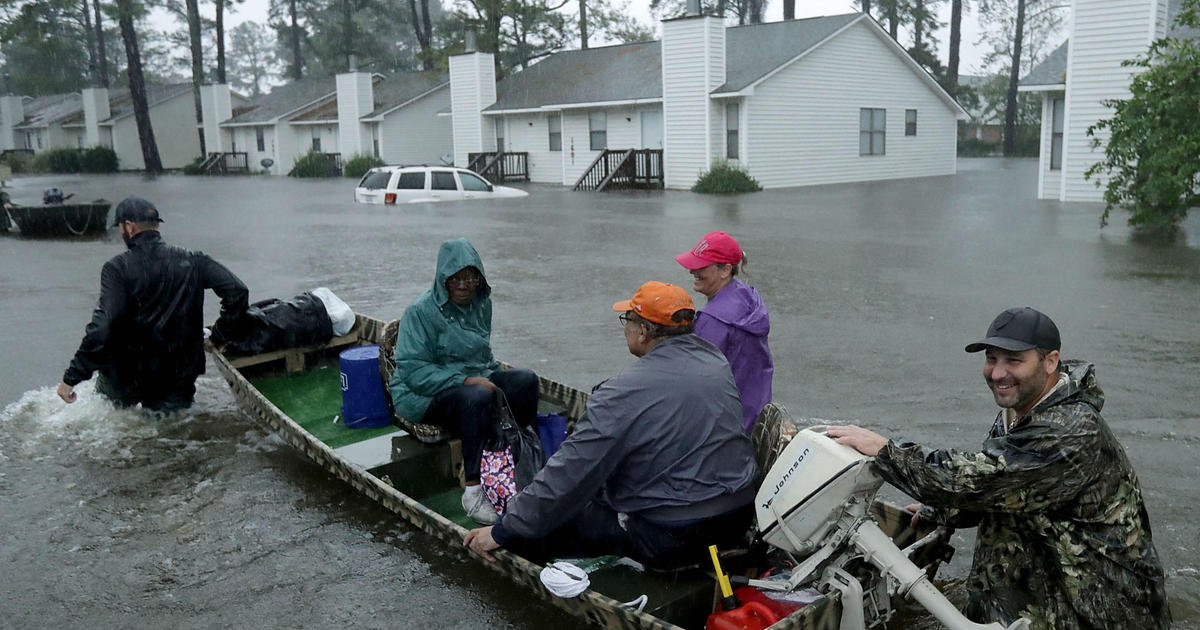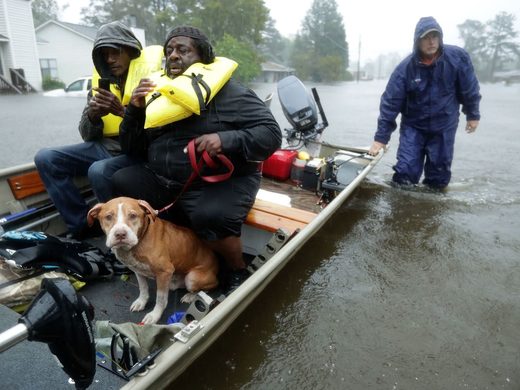PHOTOS of Superstorm Florence Reveal Apocalyptic Devastation
Tropical Storm Florence leaves 11 dead as it dumps ‘epic’ amount of rainfall on North Carolina
SOTT.net
Towns have endured more than two feet of rain and forecasters say that more than three feet of water could bring more flooding
Tropical Storm Florence has left at least 11 people dead as it continues to dump an “epic” amount of rainfall on North Carolina.
Rivers are rising towards record levels as thousands of people have been ordered to evacuate the US state.
President Donald Trump has issued a disaster declaration amid fears North Carolina will experience its most destructive bout of flooding in history.
Some towns have endured more than two feet of rain and forecasters say that more than three feet of water could bring major flooding further inland in the coming days.
A mother and her baby are among those who have been killed by Florence, which was initially categorised as a hurricane with 120mph winds.
By Saturday morning the winds weakened to 50mph but the storm’s slow speed means that communities in North Carolina are receiving a prolonged battering by torrential rain.
The National Hurricane Center said as much as 40in (102cm) was expected on the southeastern coast of North Carolina and part of northeastern South Carolina.
Southwestern Virginia is also expecting up to 10in (25cm).
North Carolina’s governor Roy Cooper said: “I cannot overstate it: Floodwaters are rising, and if you aren’t watching for them, you are risking your life.”
He added: “Know that water is rising fast everywhere, even in places that don’t typically flood.
“This system is unloading an epic amount of rainfall: in some places, measured in feet, not inches.”
Florence buckled buildings, deluged entire communities and knocked out power to more than 900,000 homes and businesses in its initial coastal onslaught.
As of 5pm local time, Florence was centred about 60 miles west of Myrtle Beach, South Carolina, as of 5pm (10pm BST) local time
It was inching west at 2mph and its winds were down to 45mph.
With half of the storm still out over the Atlantic, Florence continued to collect warm ocean water and dump it on land.
The storm has been shaping up to be a two-part disaster, with the second, delayed stage triggered by rainwater working its way into rivers and streams.
The flash-flooding could devastate communities and endanger dams, roads and bridges.
Authorities ordered the immediate evacuation of up to 7,500 people living within a mile of a stretch of the Cape Fear River and the Little River, about 100 miles from the coast.
The evacuation zone included part of the city of Fayetteville, population 200,000.
Officials in nearby Harnett County urged residents of about 1,100 homes to clear out because the Lower Little River was rising towards record levels.
One of the towns worst affected is New Bern, which sits between the Neuse and Trent rivers in North Carolina.
The 18th century town, with a population of 30,000, has been badly flooded, with 4,200 homes damaged.
More than 100 people were rescued and up to 75 more were awaiting rescue on Saturday morning, according to a town official.
US correspondent Cordelia Lynch, who is in New Bern, said: “This community in the weeks and months to come is up against a great deal of flooding.
“The sad thing is that this is a low income area – a lot of people just don’t have insurance but they are too attached to their homes and families to leave.”
Florence’s death toll could rise as a number of deaths are being investigated to see if they were caused by the storm.
A mother and baby were killed after a large tree fell on their home in Wilmington, while in Pender County a woman died of a heart attack after storm debris prevented paramedics from reaching her.
In Lenoir County a 78-year-old man was electrocuted while trying to connect extension cords and another man died after being blown away by high winds while checking on his dogs.
South Carolina recorded its first death from the storm, with officials saying a 61-year-old woman was killed when her car hit a tree that had fallen across a highway.
Three died in one inland county, Duplin, because of water on roads and flash floods, the sheriff’s office said.
A husband and wife died in a house fire linked to the storm, officials said, and an 81-year-old man died after falling and hitting his head while packing to evacuate.
Nearly 814,000 homes in North Carolina and 170,000 in South Carolina are without power. Across the two states there are some 30,000 people staying in emergency shelters.


















